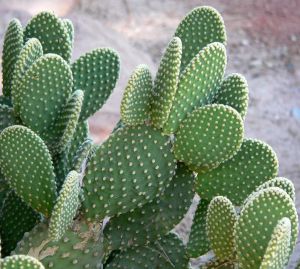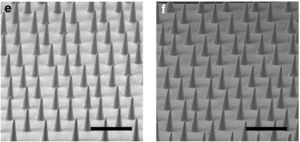There has been increased demand for new methods of separating oil and water mixtures both from environmental protection organisations in aiding oil spill clean-ups and from the oil industry in order to improve oil recovery. An increase in oil trading has been seen since the mid-1980s and the ITOPF (International Tanker Owners Pollution Federation) reported that approximately 6,000 tonnes of oil was spilt in 2016 from tankers. Now, we know that if an oil-water mixture is left undisturbed for an amount of time, it will separate by itself and form separate oil and water layers. However in a practical application, like an oil spill, there are in fact many micron sized oil droplets present in the water that must be separated out; a task current methods of oil separation (primarily through the use of membranes that allow water, but not oil to pass through) struggle with. An example is in homogenised milk where tiny fat droplets stay suspended in the milk, proving almost impossible to separate out. Despite this, it seems that a team of Chinese scientists have indeed found a novel solution: with the help of some spiny friends. These scientists noted that certain species of cacti called Optunia microdasys (commonly referred to as a ‘bunny ears’ cactus) perform a task known as fog harvesting, where they extract tiny, micron-sized water droplets from the surrounding dessert air. These droplets are very similar to micron-sized oil droplets in found in water after an oil spill, allowing the scientists to move this system underwater.
They employed arrays of many half-millimetre long conical needles, made from oil-loving materials such as copper, that capture the miniscule droplets of oil. The interaction between the conical shape of the needle and the surface tension of the water droplet then allow it to be carried to the base of the spine. Once many oil droplets have been collected a large droplet is formed, which the scientists could easily pump out. Their tests showed that these synthesised ‘cactus skins’ could separate up to 99% of the oil from water and next will require scaling up and testing in field situations.
Fusion of the natural world and science like this is in no way a new idea - it is in fact called Biomimicry.
Biomimicry is a simple idea: emulating and applying nature’s time-tested patterns and strategies in novel ways to seek sustainable solutions to human challenges. It is a whole new way of seeing the natural world around us and who knows where the next solution may come from. From dolphins to mosquitos, the natural world has already provided inspiration for not only ingenious solutions like the development of tsunami early warning systems that save lives, but in everyday items too. For example Velcro copies sticky plant burrs that get attached to animal fur, and flippers that allow divers to glide through the water mimic the webbed feet and fins of aquatic animals. Mosquitos have inspired ‘nicer’ needles and termites have told us how to build sustainable buildings. With applications in practically every area, from energy to architecture, biomimicry is a growing field and who knows? - the next great scientific breakthrough may lie in your own backyard!
Jasmine Foister
Year 12
"Hi, my name is Jasmine and I am currently in Y12 studying Biology, Chemistry and Maths. At the moment I have about 14 cacti and am quickly running out of space on my windowsill. I also enjoy art and you can often find me crafting clay llamas, crocheting kittens or throwing paint at something."  References: http://www.nature.com/articles/ncomms3276 Cactus-inspired material cleans oily water - http://www.bbc.co.uk/news/science-environment-23574410 http://indigenouswater.blogspot.co.uk/2013/10/fog-collection-system-cactus.html https://biomimicry.org/ http://www.itopf.com/knowledge-resources/data-statistics/statistics/
References: http://www.nature.com/articles/ncomms3276 Cactus-inspired material cleans oily water - http://www.bbc.co.uk/news/science-environment-23574410 http://indigenouswater.blogspot.co.uk/2013/10/fog-collection-system-cactus.html https://biomimicry.org/ http://www.itopf.com/knowledge-resources/data-statistics/statistics/


